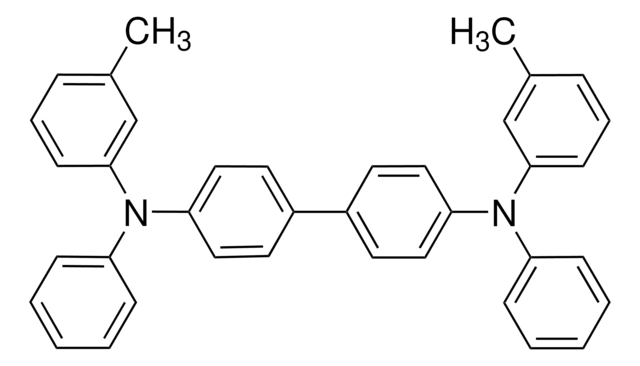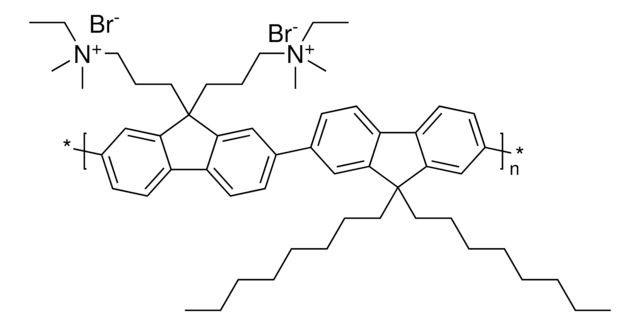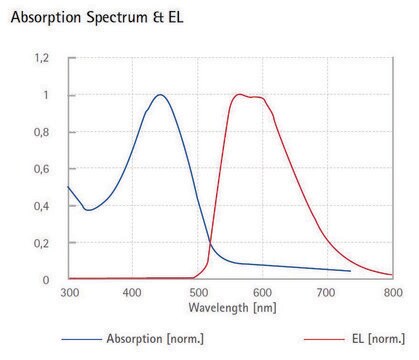Kluczowe dokumenty
901101
TFB
Synonim(y):
Poly[(9,9-dioctylfluorenyl-2,7-diyl)-co-(4,4′-(N-(4-sec-butylphenyl)diphenylamine)]
About This Item
Polecane produkty
Formularz
powder
Poziom jakości
masa cząsteczkowa
average Mw >30,000 by GPC
charakterystyka ekologicznej alternatywy
Design for Energy Efficiency
Learn more about the Principles of Green Chemistry.
sustainability
Greener Alternative Product
kolor
yellow
mp
>300 °C
kategoria ekologicznej alternatywy
, Enabling
ciąg SMILES
CCCCCCCCC1(CCCCCCCC)C2=C(C=CC(C3=CC=C(N(C4=CC=C(C(CC)C)C=C4)C5=CC=C(C)C=C5)C=C3)=C2)C6=C1C=C(C)C=C6
InChI
1S/C53H67N/c1-7-10-12-14-16-18-36-53(37-19-17-15-13-11-8-2)51-38-41(5)22-34-49(51)50-35-27-45(39-52(50)53)44-25-32-48(33-26-44)54(46-28-20-40(4)21-29-46)47-30-23-43(24-31-47)42(6)9-3/h20-35,38-39,42H,7-19,36-37H2,1-6H3
Klucz InChI
LMXSDGRJIJNLIY-UHFFFAOYSA-N
Szukasz podobnych produktów? Odwiedź Przewodnik dotyczący porównywania produktów
Opis ogólny
Zastosowanie
Kod klasy składowania
11 - Combustible Solids
Klasa zagrożenia wodnego (WGK)
WGK 3
Temperatura zapłonu (°F)
Not applicable
Temperatura zapłonu (°C)
Not applicable
Wybierz jedną z najnowszych wersji:
Certyfikaty analizy (CoA)
Nie widzisz odpowiedniej wersji?
Jeśli potrzebujesz konkretnej wersji, możesz wyszukać konkretny certyfikat według numeru partii lub serii.
Masz już ten produkt?
Dokumenty związane z niedawno zakupionymi produktami zostały zamieszczone w Bibliotece dokumentów.
Klienci oglądali również te produkty
Produkty
Advances in the area of soft optoelectronics, with a focus on the development of organic optoelectronic devices on shape memory polymers (SMP) is discussed.
Global Trade Item Number
| SKU | GTIN |
|---|---|
| 901101-250MG | 4061833251669 |
| 901101-1G | 4061826648391 |
Nasz zespół naukowców ma doświadczenie we wszystkich obszarach badań, w tym w naukach przyrodniczych, materiałoznawstwie, syntezie chemicznej, chromatografii, analityce i wielu innych dziedzinach.
Skontaktuj się z zespołem ds. pomocy technicznej









